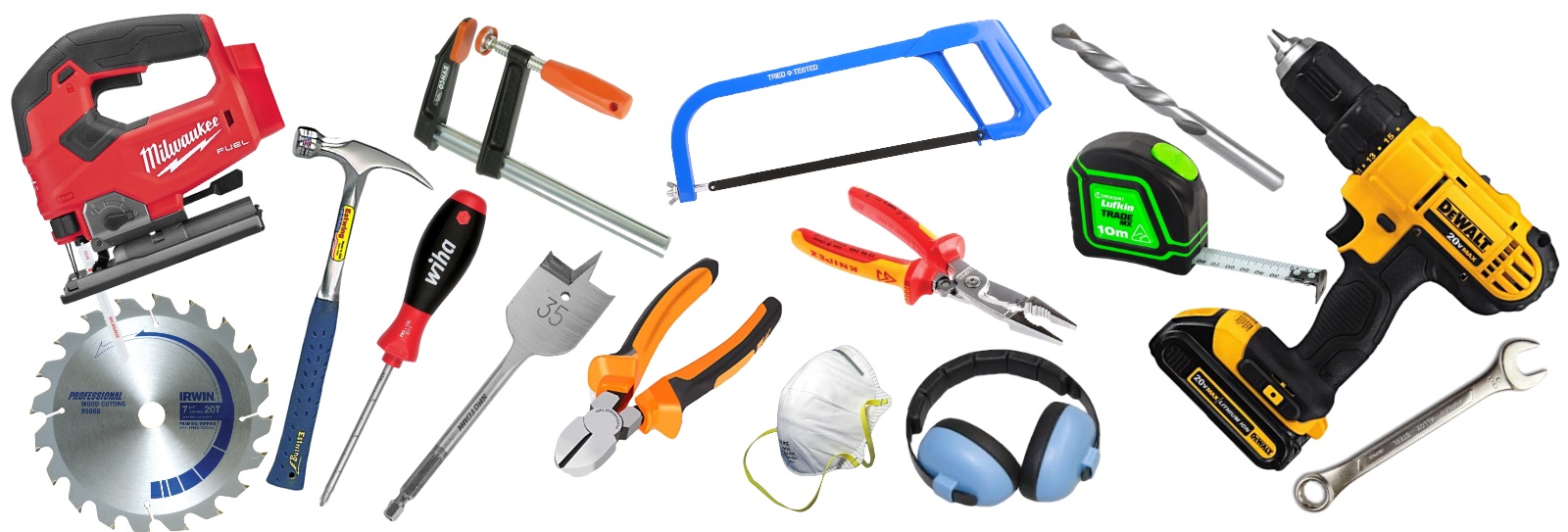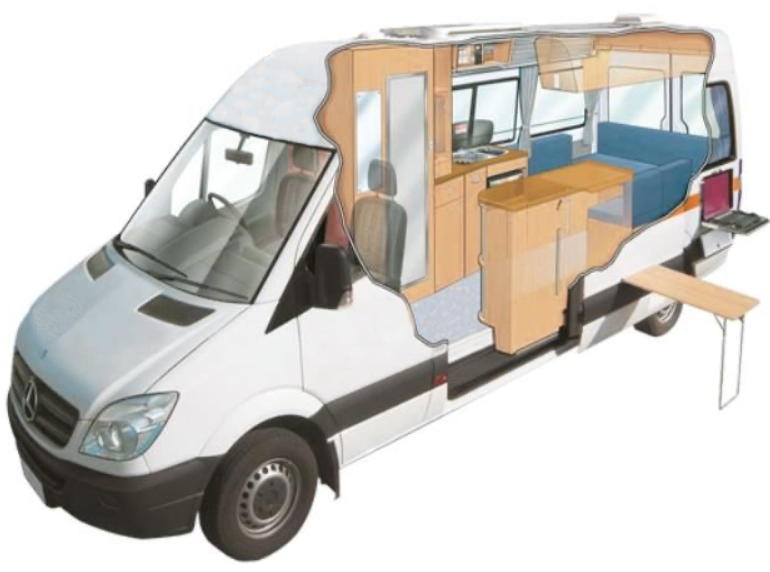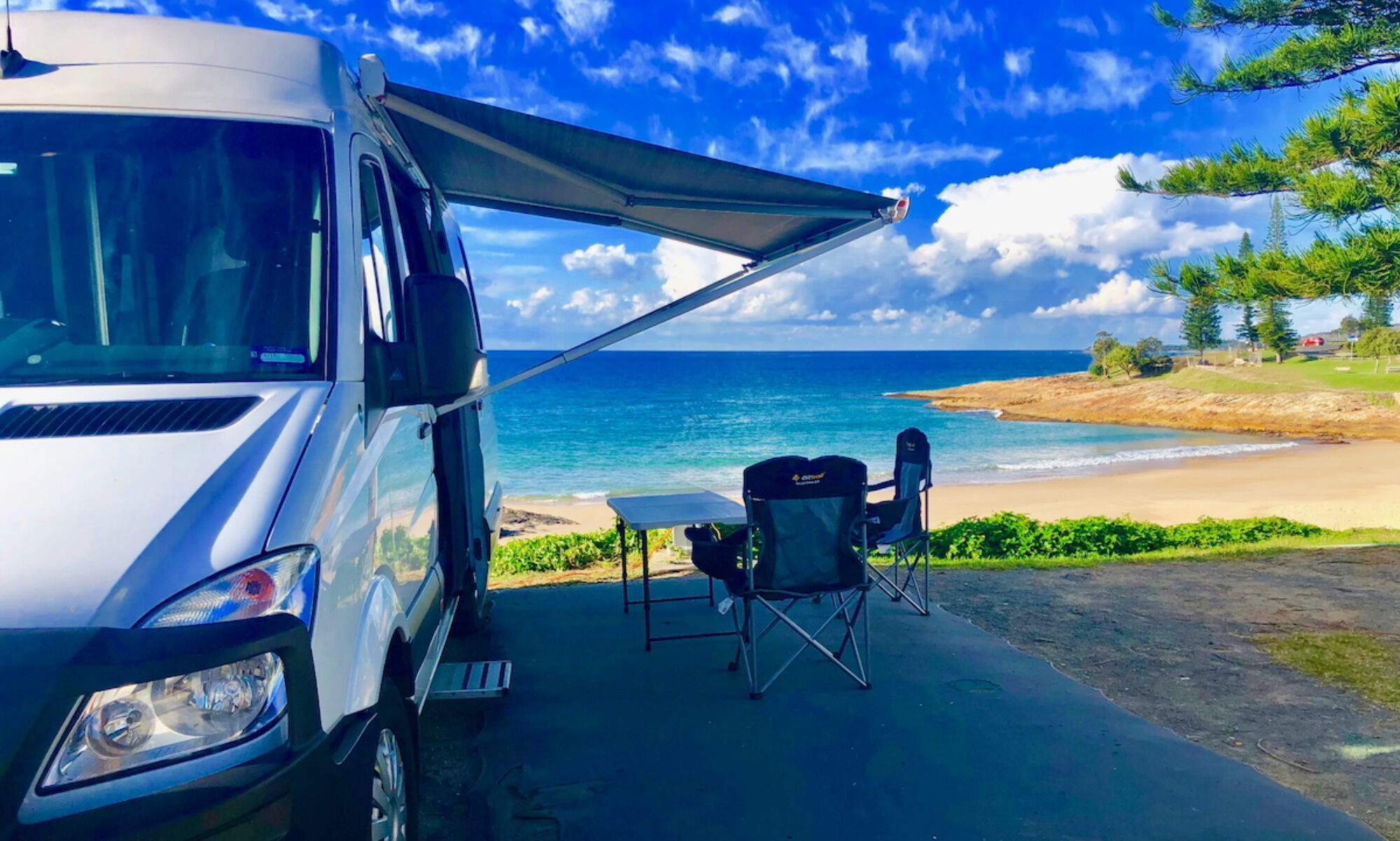See also: DIY Campervan Mini Projects >>>
DIY Fit-out | What size van? | Draw a floor plan | Cabinet materials | Fittings | 12V power
The DIY Option
(Do It Yourself)
If you are ‘handy’ with a range of tools and materials, and confident with your level of construction ability and technical knowledge, you may be able to undertake at least a basic fit-out of a large van to create a Campervan.

Fitting out an empty van as a Campervan isn’t necessarily too difficult to accomplish, depending on your level of expertise, and the extent of the fit-out that you are planning…..
-
- Basic – At the basic level, fitting a bed frame, installing a 12V power supply, a portable refrigerator and LED lighting is reasonably straightforward, if you have some basic tools and carpentry skills. A bench and cupboard area housing a fresh water container, a sink (with a manual pump tap connected to the water container), and a portable stove is also in the realm of ‘basic’ possibilities. A careful design might also include a cupboard compartment containing a slide-out portable toilet.
- Intermediate – The next level up the ladder might involve the installation of a fixed upright refrigerator, along with an underfloor water tank with an electric pump and other permanent appliances requiring fixed plumbing and cabling, along with a more robust 12V power supply and battery charging facilities. A rooftop shower tube or a portable gas-powered hot water unit for external showering is a relatively straightforward installation, as is a pull-out awning fitted to the side of the van to expand the usable living area.
- Advanced – Further up the scale (accompanied with appropriate technical knowledge and a sound understanding of regulatory safety requirements) comes the installation of permanent cooking and heating appliances (air heating and hot water) requiring a connection to the vehicle’s diesel tank, or a certified LPG installation. Other permanent fittings might include an internal shower and toilet unit, underfloor water tanks, along with a water pump and associated plumbing. A higher capacity 12V power supply with reliable battery recharging will support all permanent 12V appliances and portable electronic devices without external recharging for several days. Professionally certified installation of mains electrical wiring and outlets will provide a connection to, and battery recharging from, 230V mains power during campground stays.
- Basic – At the basic level, fitting a bed frame, installing a 12V power supply, a portable refrigerator and LED lighting is reasonably straightforward, if you have some basic tools and carpentry skills. A bench and cupboard area housing a fresh water container, a sink (with a manual pump tap connected to the water container), and a portable stove is also in the realm of ‘basic’ possibilities. A careful design might also include a cupboard compartment containing a slide-out portable toilet.
Cutting holes in the walls or roof of a van to accommodate appliances and associated vents also requires a reasonable level of expertise (and confidence!).
 If you would like to further explore DIY options, here are some suggestions from our experience with such things…..
If you would like to further explore DIY options, here are some suggestions from our experience with such things…..
-
- What size van? – This is your starting point – do you want to quietly stealth camp and be able to park in shopping centre car parks, or pilot a full home on wheels?
- Draw a floor plan – Next step is to measure up the floor space available in your chosen van, sketch up some options, then draw an accurate plan of your chosen layout. (There is also a 3D modelling option!)
- DIY Cabinet materials – This is critical – you can’t employ normal residential carpentry practices when fitting out a motor vehicle which will be travelling on public roads at speeds of 100 km/h and pushing around unexpected tight corners!
- DIY Fittings and appliances – A collection of fittings and appliances that might be suitable for your fit out needs. There is a huge range out there, from basic portable gear to near-domestic equipment for permanent van life – horses for courses.
- DIY 12V power – Your van needs three things for a reliable and sustainable 12V power supply – 1) an adequate battery capacity to power all appliances; 2) appropriate battery recharging sources, including an appropriate regulator; 3) quality cabling infrastructure to connect it all together.
- A Portable Fridge & 12V Power – Setting up a van for camping usually involves installing a bed, a fridge, lights and a 12V power supply. But it doesn’t need to be a permanent installation.
- What size van? – This is your starting point – do you want to quietly stealth camp and be able to park in shopping centre car parks, or pilot a full home on wheels?
For a more in-depth discussion of DIY conversion options:
The HODIFY Option
(Have Others Do It For You!)
If all of the above DIY options sound a tad daunting, you can still buy an empty van and contract others with specialised expertise to undertake the fit-out, or those parts of it where you might feel out of your depth.
After previously dabbling in the DIY field, we had our current van (MWB Sprinter) professionally fitted out by the team at Campervans Australia. All cabinet work is frameless plywood construction, and is cut and finished on CNC machinery to an exact fit. Mains wiring and gas installation is standards certified. Their vast experience with this work saved us a whole lot of time and pain!
Other pages in this site discuss choosing and setting up a van with a professional fit-out:
Although not strictly DIY, much of this information will still be relevant to planning for the setup of any van conversion.
|
See also: |
DIY Fit-out | What size van? | Draw a floor plan | Cabinet materials | Fittings | 12V power
